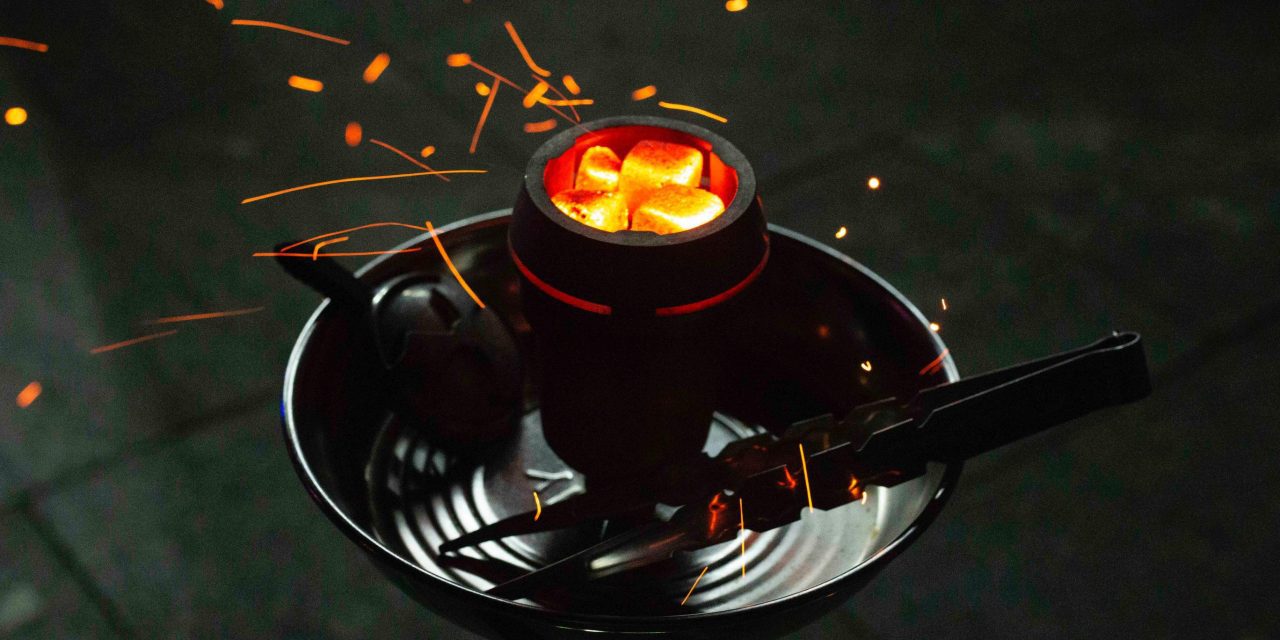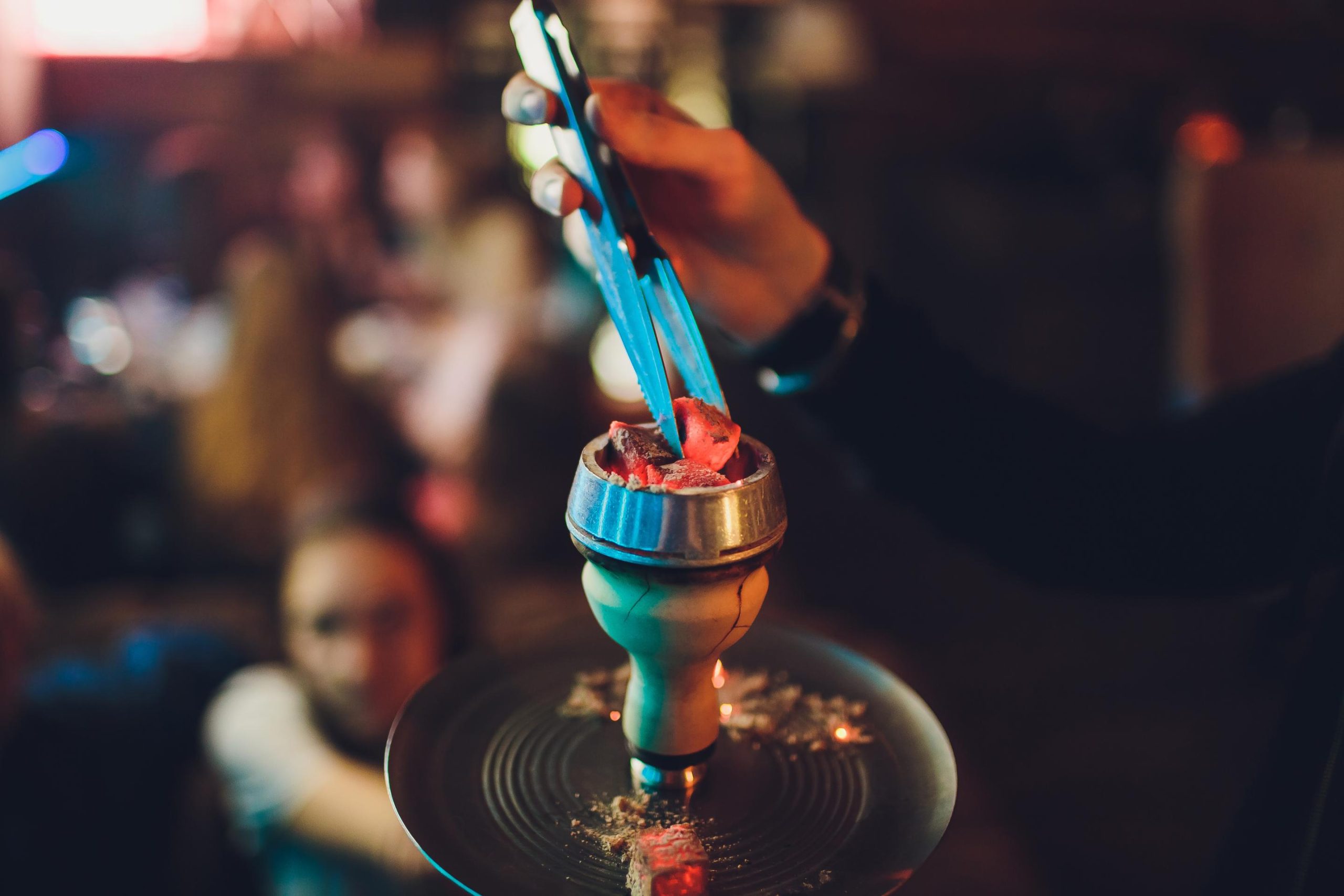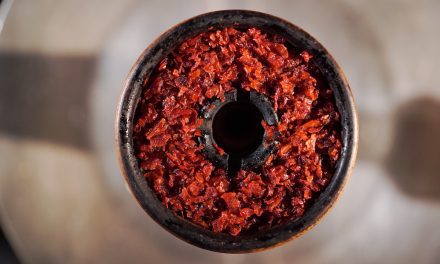If you’re an avid hookah enthusiast or just getting started with this ancient tradition, understanding the role of charcoal in hookah smoking is essential. The type of charcoal you use can greatly impact your overall hookah experience, from the flavor and smoke production to the ease of use. In this post, we will explore four popular types of hookah charcoal: quick light charcoal, natural coconut charcoal, bamboo charcoal, and lemon wood charcoal. Join us as we dive into the pros and cons of each type and provide tips on how to use them effectively. Whether you’re looking for convenience, sustainability, or unique flavors, there’s a charcoal type for everyone. Let’s get started and discover which one suits your hookah preferences best!
Introduction to Hookah Charcoal: The Role of Charcoal in Hookah Smoking
Charcoal plays a crucial role in the art of hookah smoking. It serves as the heat source that ignites the flavored tobacco, known as shisha, and creates the smoke that is inhaled through the hookah pipe. The type of charcoal used can significantly impact the overall smoking experience, affecting the flavor, duration of the session, and the quality of the smoke produced.
Traditionally, hookah charcoal was made from natural materials such as wood or coconut shells. However, with advancements in technology, quick light charcoal has emerged as a popular alternative for its convenience and ease of use. Despite the different types available, the primary function of hookah charcoal remains the same – to provide consistent heat to vaporize the shisha and create a pleasurable smoking experience.
In the following sections, we will explore the various types of hookah charcoal in detail. From quick light charcoal to natural coconut charcoal, bamboo charcoal, and lemon wood charcoal, we will cover their characteristics, pros and cons, and provide guidelines for their usage. By the end of this comprehensive guide, you will have a thorough understanding of the different types of hookah charcoal and be able to make an informed choice that suits your preferences and needs. So, let’s dive in and explore the fascinating world of hookah charcoal!
Quick Light Charcoal
Quick Light Charcoal is a popular choice among hookah enthusiasts for its convenience and ease of use. It is designed to ignite quickly without the need for additional heating sources, making it ideal for those who want a hassle-free hookah session. In this section, we will delve into what quick light charcoal is, discuss its advantages and disadvantages, and provide step-by-step instructions on how to use it effectively.
What is Quick Light Charcoal?
Quick Light Charcoal, also known as instant lighting charcoal or self-igniting charcoal, is a type of hookah charcoal that is pre-treated with chemicals to facilitate easy ignition. It typically consists of small charcoal briquettes infused with a self-igniting agent such as potassium nitrate. When exposed to a flame or spark, the chemical coating ignites, allowing the charcoal to light up quickly and evenly.
Pros and Cons of Using Quick Light Charcoal
Pros:
- Convenience: Quick light charcoal eliminates the need for additional heating devices such as a charcoal chimney starter or a stove. It can be lit simply by holding a flame to the briquette.
- Time-Saving: Quick light charcoal ignites within a few seconds, significantly reducing the setup time for your hookah session.
- Portability: Since quick light charcoal requires minimal equipment, it is easy to transport and use while traveling or in outdoor settings.
- Availability: Quick light charcoal is widely available in many hookah lounges, tobacco shops, and online stores, making it easily accessible for enthusiasts.
Cons:
- Chemical Taste: The chemicals used in quick light charcoal can sometimes impart an undesirable taste to the smoke, affecting the overall flavor of the shisha.
- Odor: Quick light charcoal may produce a noticeable odor during the initial lighting process, which can be off-putting for some users.
- Shorter Burn Time: Compared to other types of charcoal, quick light charcoal tends to burn faster, resulting in a shorter hookah session duration.
How to Use Quick Light Charcoal
- Prepare your hookah setup by assembling the hookah pipe, filling the base with water, and packing the bowl with your preferred shisha tobacco.
- Remove a quick light charcoal briquette from the packaging and hold it with tongs or a charcoal holder.
- Ignite the briquette by holding a lighter or match to its surface. Rotate the briquette to evenly distribute the flame across its surface.
- Allow the charcoal to ignite fully. It will typically start to glow red or orange and may emit sparks during the process.
- Once the briquette is fully lit, place it on the edge of the hookah bowl, ensuring it does not come into direct contact with the shisha.
- Wait for a few minutes to allow the heat from the charcoal to evenly distribute within the bowl.
- Start enjoying your hookah session by taking slow, steady draws through the hookah hose.
- If the flavor or smoke production diminishes, you can add another fully lit quick light charcoal briquette to maintain the heat.
Remember to exercise caution when handling the hot charcoal and ensure proper ventilation while using quick light charcoal indoors.
In the next section, we will explore another popular type of hookah charcoal – natural coconut charcoal. Discover its unique characteristics and decide if it suits your hookah preferences.
Natural Coconut Charcoal
Natural coconut charcoal is a widely used and highly regarded type of hookah charcoal. It is made from the shells of coconuts, which are a sustainable and eco-friendly source. In this section, we will explore the characteristics of natural coconut charcoal, discuss its benefits and drawbacks, and provide guidelines for its proper usage.
Understanding Natural Coconut Charcoal
Natural coconut charcoal is produced by heating coconut shell pieces in a controlled environment until they carbonize. The resulting charcoal is then crushed into small pieces or molded into briquettes for use in hookah smoking. It is known for its high density, low ash content, and ability to maintain a consistent heat throughout the hookah session.
Benefits and Drawbacks of Natural Coconut Charcoal
Benefits:
- Longer Burn Time: Natural coconut charcoal has a longer burn time compared to quick light charcoal. It can provide a prolonged hookah session, allowing you to enjoy your smoke without the need for frequent charcoal changes.
- Minimal Flavor Interference: Coconut charcoal is known for its neutral flavor profile, which means it imparts minimal taste to the smoke. This allows for a cleaner and more authentic flavor experience, allowing the true essence of the shisha tobacco to shine through.
- Low Ash Production: Coconut charcoal produces less ash compared to other types of charcoal, resulting in a cleaner and less messy hookah setup. This also means less frequent ashing is required during the session.
- Eco-Friendly: Natural coconut charcoal is made from a renewable and sustainable source. The use of coconut shells as a raw material reduces waste and promotes environmental sustainability.
Drawbacks:
- Longer Ignition Time: Compared to quick light charcoal, natural coconut charcoal requires a longer ignition time. It needs to be heated using an external heat source, such as a charcoal chimney starter or a stove, before it can be used in the hookah.
- Heating Preparation: Using natural coconut charcoal requires some pre-planning, as you need to ensure the charcoal is fully lit and glowing red before placing it on the hookah bowl. This process may take a bit longer compared to quick light charcoal.
Proper Usage of Natural Coconut Charcoal
Here are some guidelines for using natural coconut charcoal effectively:
- Heat Preparation: Place the desired amount of coconut charcoal in a charcoal chimney starter or on a heat-resistant surface. Ignite the charcoal using a stove or a butane torch. Allow it to heat until it becomes fully lit and glows red or orange.
- Placement: Once the coconut charcoal is fully lit, carefully transfer it to the edge of the hookah bowl, ensuring it does not come into direct contact with the shisha. Distribute the coals evenly around the bowl if using multiple pieces.
- Heat Management: Keep an eye on the heat level during the session. If the smoke becomes harsh or the flavor diminishes, adjust the distance between the charcoal and the shisha by either moving the charcoal closer or further away from the bowl.
- Additional Charcoal: If more heat is needed, you can add another fully lit coconut charcoal piece to maintain the desired temperature. Always handle hot charcoal with tongs or a charcoal holder to avoid burns.
In the next section, we will explore another alternative to traditional hookah charcoal – bamboo charcoal. Discover its unique qualities and determine if it suits your hookah preferences.
Bamboo Charcoal
Bamboo charcoal is an increasingly popular alternative to traditional hookah charcoal options. Derived from bamboo plants, this type of charcoal offers unique qualities and benefits. In this section, we will delve into the basics of bamboo charcoal, discuss its advantages and disadvantages, and provide guidelines for its usage.
Basics of Bamboo Charcoal
Bamboo charcoal is produced by heating bamboo in a controlled environment until it carbonizes. This process removes impurities and moisture, resulting in a high-quality charcoal product. It is then formed into briquettes or small pieces for use in hookah smoking.
One notable characteristic of bamboo charcoal is its porous structure. It contains numerous tiny pores that help absorb impurities and odors, leading to cleaner and smoother smoke. Additionally, bamboo charcoal has a relatively low ash content, which reduces the need for frequent ashing during a hookah session.
Advantages and Disadvantages of Bamboo Charcoal
Advantages:
- Absorption of Impurities: Bamboo charcoal’s porous structure allows it to absorb impurities and odors, resulting in a cleaner and purer smoke. This can enhance the overall flavor and quality of the hookah session.
- Eco-Friendly: Bamboo is a highly renewable resource, making bamboo charcoal an environmentally friendly choice. The fast growth rate of bamboo plants ensures a sustainable supply for charcoal production.
- Longevity: Bamboo charcoal has a longer burn time compared to some other types of charcoal. This means you can enjoy an extended hookah session without needing to replace the charcoal frequently.
Disadvantages:
- Limited Availability: Bamboo charcoal may not be as widely available as other types of hookah charcoal. However, it can be found in specialty stores or online retailers that cater to hookah enthusiasts.
- Preparation Time: Bamboo charcoal requires proper heating to achieve full ignition and even distribution of heat. This process may take slightly longer compared to quick light charcoal.
Guidelines for Using Bamboo Charcoal
Here are some guidelines for using bamboo charcoal effectively:
- Ignition: Place the desired amount of bamboo charcoal in a charcoal chimney starter or on a heat-resistant surface. Ignite the charcoal using a stove or a butane torch. Allow it to heat until it becomes fully lit and glows red or orange.
- Placement: Once the bamboo charcoal is fully lit, carefully transfer it to the edge of the hookah bowl, ensuring it does not come into direct contact with the shisha. Distribute the coals evenly around the bowl if using multiple pieces.
- Heat Management: Monitor the heat level during the session. Adjust the distance between the charcoal and the shisha by moving the charcoal closer or further away from the bowl to maintain the desired temperature and flavor.
- Additional Charcoal: If more heat is needed, add another fully lit bamboo charcoal piece to the bowl. Always handle hot charcoal with tongs or a charcoal holder to prevent burns.
In the next section, we will explore another type of hookah charcoal – lemon wood charcoal. Discover its distinctive qualities and determine if it aligns with your hookah preferences.
Lemon Wood Charcoal
Lemon wood charcoal is a unique and lesser-known type of hookah charcoal that offers its own set of characteristics and benefits. In this section, we will introduce you to lemon wood charcoal, discuss its pros and cons, and provide best practices for using it effectively.
Introduction to Lemon Wood Charcoal
Lemon wood charcoal is derived from the wood of lemon trees, specifically the branches and trunks that are no longer productive for fruit-bearing. This type of charcoal is known for its distinct aroma and flavor, which can enhance the overall smoking experience. Lemon wood charcoal is typically available in the form of small chunks or briquettes.
Pros and Cons of Lemon Wood Charcoal
Pros:
- Unique Flavor: Lemon wood charcoal imparts a subtle citrus aroma and flavor to the smoke, adding a refreshing twist to your hookah session. This can complement certain shisha flavors and create a more enjoyable smoking experience.
- Long Burning Time: Lemon wood charcoal has a slow and steady burn, allowing for an extended hookah session without the need for frequent charcoal changes. This can be particularly beneficial for longer social gatherings or relaxing solo smoking sessions.
- Low Ash Production: Lemon wood charcoal tends to produce minimal ash, reducing the need for frequent ashing and providing a cleaner smoking experience.
Cons:
- Availability: Lemon wood charcoal may be less readily available compared to other types of hookah charcoal. It may require some searching to find a reliable source for purchasing lemon wood charcoal.
- Specific Flavor Profile: The citrus aroma and flavor of lemon wood charcoal may not appeal to everyone’s taste preferences. It is important to consider personal preferences and the shisha flavors that would complement the lemon wood flavor.
Best Practices for Using Lemon Wood Charcoal
To make the most of your lemon wood charcoal, follow these guidelines:
- Preparing the Charcoal: Place the desired amount of lemon wood charcoal in a charcoal chimney starter or on a heat-resistant surface. Use a lighter or match to ignite the charcoal. Allow it to heat until it becomes fully lit and glows red or orange.
- Placing the Charcoal: Once the lemon wood charcoal is fully lit, carefully transfer it to the edge of the hookah bowl, ensuring it does not come into direct contact with the shisha. Distribute the chunks or briquettes evenly around the bowl if using multiple pieces.
- Managing Heat: Monitor the heat level during the session. Adjust the distance between the charcoal and the shisha by moving the charcoal closer or further away from the bowl to maintain the desired temperature.
- Flavor Pairing: Consider pairing lemon wood charcoal with shisha flavors that would complement the citrus aroma and flavor. Fruity or minty flavors often pair well with lemon wood charcoal, creating a refreshing and enjoyable smoking experience.
- Adding Charcoal: If the heat diminishes or the flavor weakens, you can add another fully lit lemon wood charcoal piece to the bowl. Always use tongs or a charcoal holder when handling hot charcoal to avoid burns.
With these tips in mind, you can explore the unique flavors and qualities that lemon wood charcoal brings to your hookah sessions.
Conclusion
In this comprehensive guide, we have explored four popular types of hookah charcoal: quick light charcoal, natural coconut charcoal, bamboo charcoal, and lemon wood charcoal. Each type has its own distinct characteristics, advantages, and disadvantages. Whether you prioritize convenience, sustainability, or unique flavors, there is a hookah charcoal option that suits your preferences.
Remember, the choice of charcoal can significantly impact your overall hookah smoking experience, influencing the flavor, smoke production, and session duration. Consider your personal preferences, the flavor profiles you enjoy, and the level of convenience you seek when selecting the ideal hookah charcoal.
By understanding the different types of hookah charcoal and following the provided guidelines for usage, you can enhance your hookah sessions and enjoy a more satisfying and flavorful smoking experience. So, go ahead, explore the world of hookah charcoal, and elevate your hookah enjoyment to new heights!
Thanks for joining us for our latest article! At Inside Hookah, we strive ourselves on providing comprehensive, fact-based information that’s easy for hookah users of all skill levels to understand.
If you have any questions or comments, we’d love to hear about them. Feel free to contact us or drop us a message in the comments.
Looking for even more Inside Hookah Articles to check out? Explore the latest Hookah News and Hookah Reviews by the Inside Hookah Team!
Stay tuned for our next article and happy smoking!







